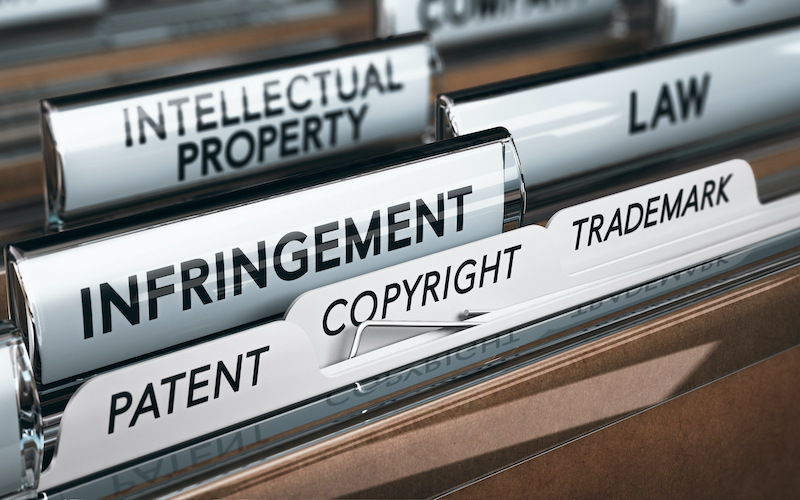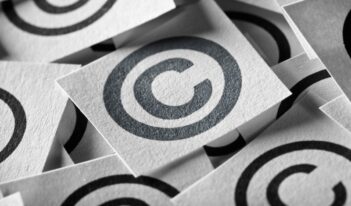
A recent U.S. Copyright Office report reviews a key provision of the Digital Millennium Copyright Act.
For years, the U.S. Copyright Office has grappled with how to update federal copyright law for the 21st Century. A recent report from the Copyright Office on Section 512 of the Digital Millennium Copyright Act (DMCA)—a law that grants “safe harbor” to online service providers (OSPs) for potentially infringing content generated by users, such as a fan’s YouTube video that features copyrighted music—is the culmination of a years-long study into the state of the DMCA and how to improve it.
Section 512 is the product of the U.S. Congress’s attempt to balance two competing interests. On one hand, Congress designed the legislation to provide OSPs room to grow while avoiding a potential onslaught of copyright lawsuits. At the same time, Congress sought to give content creators and rights holders a tangible solution to combat online copyright infringement.
As a means of enforcing this balance, Section 512 includes a “notice-and-takedown” provision, which requires OSPs seeking the safe harbor liability protection to remove infringing material upon written notice from rights holders. After the DMCA passed, this mechanism became “a useful tool that enabled parties to reach quick resolution of copyright disputes while avoiding costly litigation,” according to copyright attorney Janet Fries.
As the internet has grown, however, there has been widespread disagreement over whether Section 512 still achieves Congress’s intended balance. Reflecting this divide, the Copyright Office’s research for its recent report on Section 512 yielded “dramatically varied opinions” on the legislation’s effectiveness. OSPs generally view Section 512 as a success that has allowed them to “grow exponentially and serve the public without facing debilitating lawsuits.” Rights holders, however, argue that courts have interpreted the Section 512 safe harbor protections too broadly, while leaving individual creators to address the “whack-a-mole” problem of reporting reappearing infringing content.
As stated in its report, the Copyright Office now concludes that Section 512 is out of balance with Congress’s initial intent. This week’s Saturday Seminar focuses on the debate surrounding Section 512 of the DMCA and how this law could be strengthened for the 21st century.
- Although the DMCA played a crucial role when enacted in immunizing OSPs from copyright liability, its statutory value to copyright law has decreased over time, Christopher A. Cotropia and James Gibson of the University of Richmond School of Law argue in a recent article published in the Iowa Law Review. They discuss how the DMCA has allowed federal courts to retain significant influence in defining what constitutes infringement online. Because Congress did not establish set standards for copyright infringement and instead enacted four general safe harbors, “courts were free to fashion liability standards that favored service providers or copyright owners, as they saw fit,” argue Cotropia and Gibson. They claim that the definition of liability in case law has converged with the DMCA’s safe harbor standards over time to create a “harmful conflation of legal standards that should have remained separate.”
- The DMCA safe harbor provision is “a legislative compromise” that protects online service providers from liability and gives copyright holders an out-of-court process to remove infringing content, according to the University of North Carolina School of Law’s Amanda Reid. In an article published in Communication Law and Policy, Reid focuses on a third component to that compromise, the fair use doctrine, which permits limited use of copyrighted work without the copyright holder’s permission. Before ordering users to take down material for copyright infringement, service providers and copyright holders must consider fair use. Reid argues that service providers should also consider fair use before terminating users’ accounts for repeat infringement, because “terminating internet access can have a profound impact on individuals.”
- Individuals “should be afforded the right to stop the unwanted broadcasting of their image on social media platforms,” Harvard Law School fellow Zahra Takhshid argues in an article published in the Buffalo Law Review. Takhshid notes that under U.S. copyright law, “an individual does not have a copyrightable claim toward her image taken in public.” Rather, the copyrightable claim may belong to the person who captured the image. Section 512, which only allows takedown notices from a rights holder or the rights holder’s authorized agent, consequently may not fully protect this privacy right. For people who do not have an ownership claim to a personal image or video recording that is widely broadcast against their will, Section 512 may leave them without a legal remedy. Takhshid therefore proposes that the U.S. adopt a “tort of unwanted broadcasting.”
- Calls to abolish Section 512’s safe harbor in the music industry may result in serious consequences in copyright law, argue the University of Haifa’s Niva Elkin-Koren, Yifat Nahmias and Maayan Perel in a forthcoming Stanford Law and Policy Review article. Musicians, they suggest, have adopted a dangerous rhetoric of blaming safe harbor provisions for allegedly declining profits in the industry. But the industry’s unverified rhetoric clouds competent policy making, claim Elkin-Koren and her co-authors.
- Under Section 512 of the DMCA, an OSP is eligible for safe harbor protection from liability in the absence of actual knowledge of infringement or awareness of relevant facts or circumstances. This reliance on “knowledge” is an inapt framework to determine liability, William and Mary Law School’s Laura A. Heymann argues in a recent Wake Forest Law Review article. It is “arguably impossible” to know factually whether certain material is infringing before it is adjudicated, she writes, such that a knowledge requirement becomes more akin to “a prediction of a legal status.” Section 512’s use of the word “knowledge” may therefore “lead courts, juries, and policy makers to overestimate the ability of service providers to identify and respond to problematic material on their platforms,” argues Heymann. One solution she proposes is to revise statutorily the doctrine so that liability is based on notice. This approach, Heymann notes, would generally extend the DMCA’s notice and takedown safe harbor provisions.
- Legal online expression may be chilled by automated notices filed under Section 512 of the DMCA, Harvard Law School’s Jon Penney argues in a recent article in the Stanford Technology Law Review. Both infringement notices and content removal are run in part by automated processes, making “robots” and “machine algorithms” in practice the key decision-makers about potential copyright violations under the DMCA. Potentially infringing content targeted by automation is much more likely to be taken offline than content targeted by non-automated notices, claims Penney. “This is troubling because…legal content may very well be caught in these high volumes of automated notices and left offline,” he writes.
The Saturday Seminar is a weekly feature that aims to put into written form the kind of content that would be conveyed in a live seminar involving regulatory experts. Each week, The Regulatory Review publishes a brief overview of a selected regulatory topic and then distills recent research and scholarly writing on that topic.



